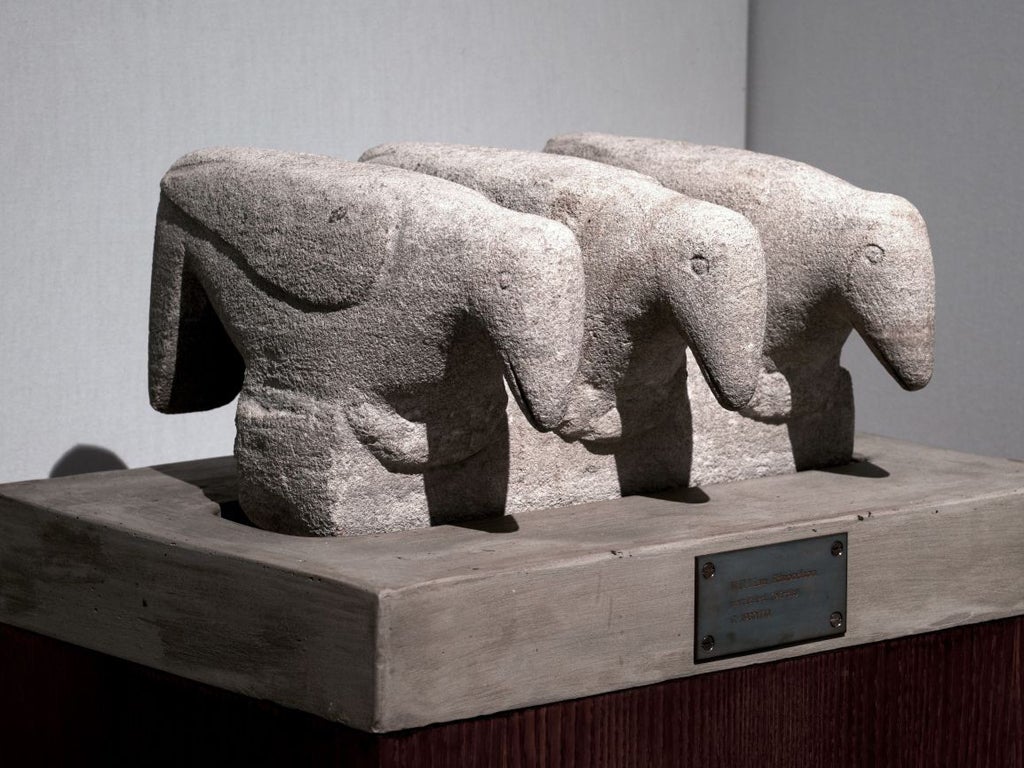Frieze, Regent's Park, London
If the work doesn't grab you, there's always the bin ...

Osvaldo Romberg practises "art historical analysis". The Argentinian deconstructs, for example, Botticelli's The Birth of Venus, arranging its colours in a Farrow & Ball-like chart, and grading it on a scale of one to ten for, say, invention. He has been doing this for about 40 years, which is the length of time it seems to take to get around this year's Frieze.
Best start with the new event, Frieze Masters, for historical perspective, and because, while extensive, it is the smaller show. You won't see work of this calibre outside public collections: from Alaskan dance masks to Zurbaran, the range is dizzying. Here a 1st-century Celtic carved granite figure, there a bacchanalian scene painted by Guido Reni for the ceiling of the Queen's House at Greenwich. Here three jutting gargoyles from a cathedral in Alsace, there drawings made in his twenties by Andy Warhol. Enough Morandi pots to set up a china shop, a Calder mobile rumoured, at £12.5m, to be the show's costliest exhibit, Léger, Moore, Richter ...
Red dots were going on Lichtenstein, Oldenburg, Picasso. But if I had been shopping, it would have been for a piece by the American sculptor William Edmondson, unrepresented in any European gallery: the son of freed slaves, he began carving limestone in his late fifties, and the intuitive Romanesque-style simplicity of his figures, made in the 1930s and '40s, is heartstoppingly lovely.
Eavesdropping at Frieze Masters is a grand new sport: "three times that price...", "$1,000 a centimetre...", "I've already got an Archipenko ..." For those of us who see such art only in galleries, it feels as though the money-changers have sneaked back into the temple. At Frieze itself, the overhearings are different: "Scary", "Is there another this size?" and, in the ladies, "I can't believe someone would take the bin". With nearly 200 exhibitors to visit, the Romberg-ometer comes in handy.
Some days it seems as if nothing new can be done with paint. No wonder artists turn to other media, but it makes identifying the artworks harder. Are those Tesco choc-chip muffins on the mocked-up crime scene evidence, or elevenses? Is that bug meant to be crawling on Mona Hatoum's Baluchi rug? (No.)
Sarah Lucas stuffs knotted tights with fluff to make a chair; Haegue Yang arranges venetian blinds into towers of light and shade. Several artists are working in feathers, including Henrik Hakansson's The Y Swarm, a Calder-like mobile of stuffed starlings. There is a disappointing lack of political comment. But Danh Vo is recreating the Statue of Liberty in copper sections that will never be assembled – little beacons of freedom are to be scattered all over the world. Darren Almond answers a silent "Where are we?" with his brass sign inthistogether.
Between the pavilions, in a free sculpture park curated by Clare Lilley, Adip Dutta's nests, spun in metal thread and hung from an oak tree, and Hemali Bhuta's Speed Breakers – root-and-branch rumble strips buried in the turf, are among thrilling pieces that define what is wrong with much of the contemporary work indoors: too much PayPal, not enough passion.
Ends today (frieze.com)
Join our commenting forum
Join thought-provoking conversations, follow other Independent readers and see their replies
Comments
Bookmark popover
Removed from bookmarks